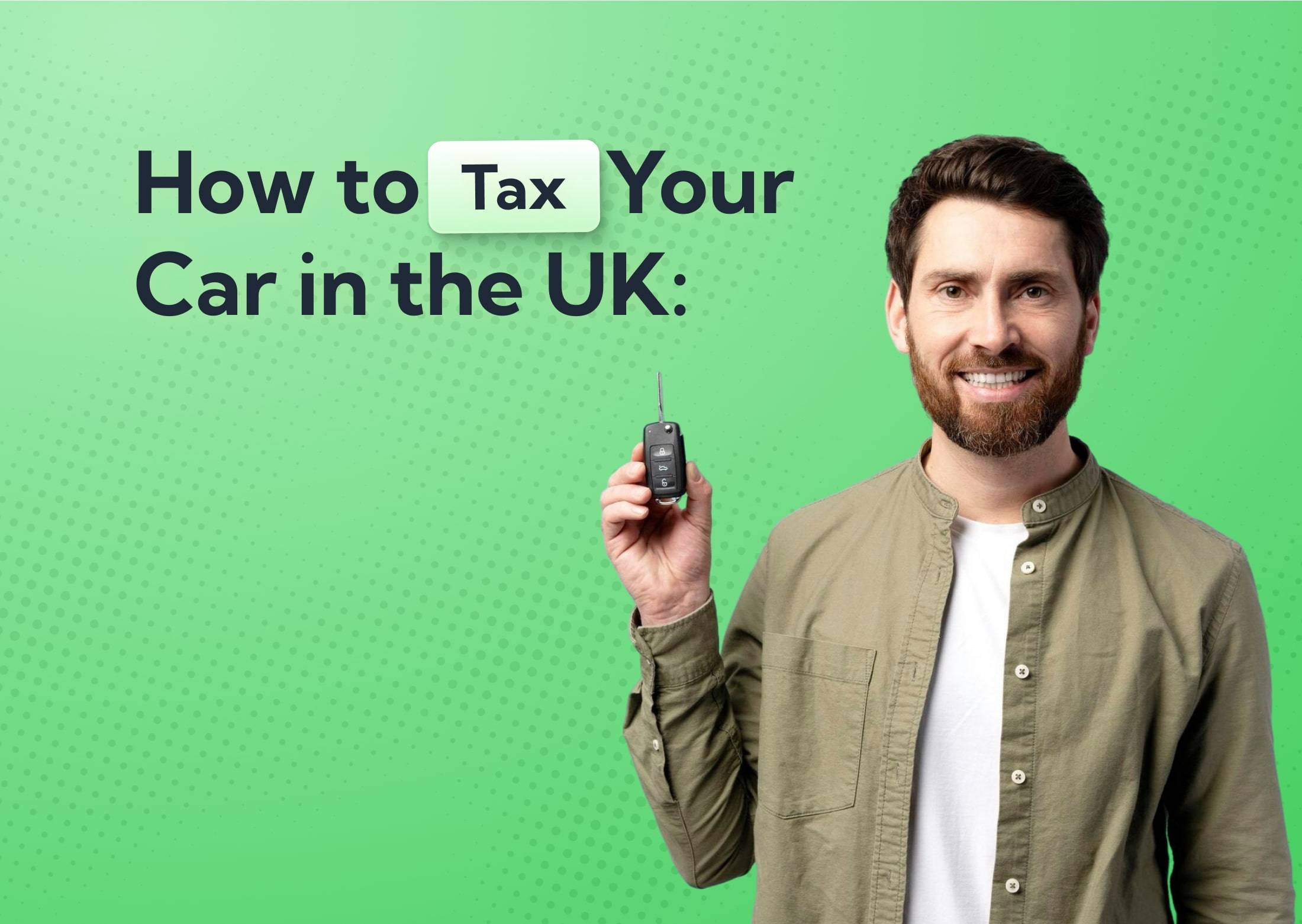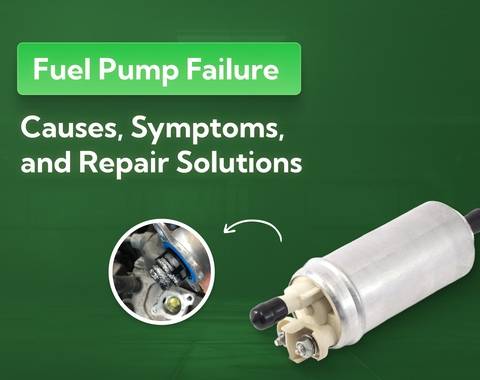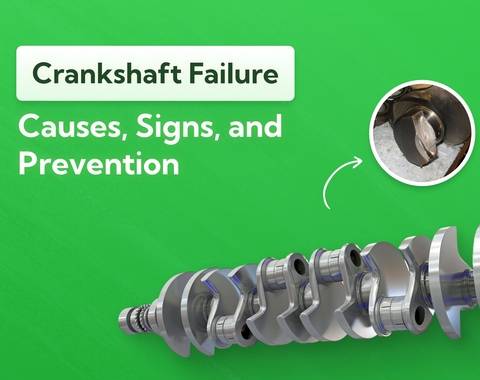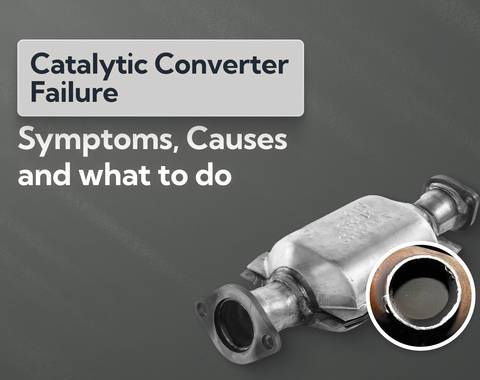How to Tax Your Car in the UK: Steps, Documents and Best Practices
Has taxing your car got you scratching your head? Read our expert guide to find out how to tax a car in the UK. We’ll teach you every method for taxing your car (online, phone, post) as well as how to tax a car without V5 documentation, how to tax a SORN car, and in a range of other special circumstances. Read on to get a hold of your car finances!
Last updated: 17th October, 2025

Award-winning CEO driving growth and social impact across automotive, recycling, and technology-led enterprise platforms.

Listen to this story
Did you know that about 1.3% of all vehicles in the UK are untaxed? That might not sound like much, but that equates to tens of thousands of drivers. That means tens of thousands of vehicle owners are risking heavy fines and even their licenses.
Some of this tax evasion could be down to the fact that some cars don’t technically need to pay any road tax. However, even if your car tax is £0, you still need to officially tax your vehicle. In other words: taxation is a compulsory part of vehicle ownership for all drivers, whatever their vehicle.
Even if you know how to tax a car, you might not know how to tax a car without a V5, for example, or how to tax a SORN car. There’s more to road tax than meets the eye!
Find out everything you need to know in this guide.
What's in this article
- 1. The Basics of Car Tax in the UK
- 2. When You Need to Tax Your Car
- 3. Required Documents for Taxing a Car
- 4. Step-by-Step Guide to Tax Your Car Online
- 5. How to Tax a Second-Hand Car (Dealer vs. Private Sale)
- 6. How to Tax Your Car at the Post Office
- 7. Special Cases When Taxing a Car
- 8. Common Mistakes to Avoid When Taxing Your Car
- 9. Best Practices for Stress-Free Car Tax Management
- 10. Final Thoughts on Taxing a Car in the UK
The Basics of Car Tax in the UK
Every vehicle owner in the UK must tax their vehicle. Even if they’re tax-exempt, they must still go through the official process. Why? Car tax, officially called Vehicle Excise Duty (VED) keeps you and others safe, and also helps maintain our public roads at driving standard.
Essentially, vehicle owners pay an annual tax based on their vehicle’s age, fuel type, engine size, and CO2 emissions (as well as listing price in some cases). Once a year, drivers must log in and pay the next year’s tax.
This process is managed by the Driver and Vehicle Licensing Agency (DVLA). They’re in charge of not only taxing vehicles and giving out driving licenses, but also of keeping all necessary records regarding the country’s car ownership.
When You Need to Tax Your Car
As a basic rule of thumb, drivers need to tax their vehicle(s) once a year. There’s no universal date by which you have to pay; you pay road tax exactly one year after you last paid it. If you’re using the same car for multiple years in a row and nothing has changed, that makes things nice and easy.
However, there are a few other circumstances in which you’ll need to tax your vehicle, too (which drivers often forget!). They are:
- First registration - if a vehicle is brand new and has never been privately owned, the owner will need to pay its first VED when they register the car for the first time. Technically, this isn’t a renewal.
- After buying or selling - selling or scrapping your car? It’s your responsibility to cancel your road tax (though not to renew it for the next owner). You must do this, otherwise you’ll continue to be charged. Similarly, if you’ve just bought a car, you should start paying tax on it immediately - or at least before you get behind the wheel.
- Coming off of SORN status - cars with a valid SORN (Statutory Off Road Notification) don’t need to pay tax as they’re not being used on public roads. However, as soon as it begins to use the roads again, the owner must pay new road tax.
Remember: paying car tax is your responsibility. It’s not automatic. If you drive without proper taxation, you could face fines of up to £1000 and even points on your license!
Required Documents for Taxing a Car
Before you head over to the DVLA website to start filing your tax, we recommend gathering all the documents you need first. This will save you time later on.
The exact documents you need to tax your vehicle depends on how you’re doing it. There are three ways to tax your car in the UK:
- Online
- By phone
- By post
We’ll get into how to tax a car in different ways later on. For now, let’s see what you’ll need:
V5C Logbook or New Keeper Slip (V5C/2)
Your V5C, sometimes called a “V5” or a “V5 logbook” is an essential document. Every vehicle should have one. It’s basically your car’s identity card. It contains:
- Vehicle details (make, model, reg number)
- The registered keeper’s details
- The previous keeper’s details
It’s not actually a legal requirement to have a V5C to drive. However, it makes processes like taxation much easier. If you can’t find yours, you should think about getting a new one as soon as possible. All you have to do is fill out a V62 form and send it to the DVLA.
A V5C/2, or “new keeper slip”, is similar. Drivers should get one when they buy a car from a dealership. Just like a V5C, it contains:
- Vehicle details
- Space to record the new keeper’s details
As well as;
- The date of sale
- Declaration signed by both the buyer and the seller
You can use a V5C/2 to tax your car. You don’t need both documents.
Valid MOT Certificate (If Applicable)
A valid MOT tells the DVLA your car is roadworthy. In other words, they can’t allow a car to be on the road (by taxing it) if it doesn’t meet safety standards. So, an MOT certificate is also an extremely important document.
The DVLA will actually automatically check if your vehicle has a valid MOT on their system, so you don’t necessarily need your physical copy. However, we recommend keeping it handy just in case!
The only vehicles that don’t need a valid MOT are “historic vehicles” more than 40 years old (as long as they haven’t been “substantially changed”). That means if your car was first registered before January 1985, you don’t need an MOT. You might not even need to pay any tax, although you still have to go through the process of taxing the vehicle.
Proof of Insurance and Insurance Database Check
Just like with MOTs, the DVLA performs automatic checks on their insurance database to check your vehicle is properly insured. If it’s not, you’ll need to insure it before you can tax it.
This check is automatic. However, it’s a good idea to keep a physical receipt/certificate and have it with you when you’re filing your road tax, just in case.
Other Documents That May Be Requested
In most cases, a V5C is the only physical document you’ll need, along with your payment method, to pay car tax in the UK. However, sometimes, there are complications. Perhaps you’re declaring a car SORN, or reclassing it for the first time as “historic”. Maybe you’re applying for a tax exemption of some kind.
Whatever the case, the DVLA could ask for other supporting documents, like:
- SORN - a valid SORN if you’re declaring the vehicle off the road instead of taxing it.
- V62 form - if you don’t have the V5C and need to apply for one with a V62.
- V11 tax reminder - this is sent by DVLA before your tax is due and can be used when taxing instead of a V5C.
- First registration docs - if the vehicle is brand new or imported (e.g. proof of purchase, customs forms like NOVA notification for imports).
- Disabled tax class evidence - if applying for free/reduced tax (e.g. a Certificate of Entitlement to PIP or DLA).
- HGV or specialist vehicle certificates - such as plating and testing certificate (for lorries) or PSV certificate (for buses/coaches)
Step-by-Step Guide to Tax Your Car Online
Taxing your car online is the quickest and easiest method. After all, you don’t need to go down to the Post Office - just pay right from your phone!
Here’s how to tax a car online in the UK in four simple steps:
Access the DVLA Car Tax Service
Simply head over to the DVLA’s “Tax your vehicle” page. There, you’ll find some information about what documents you’ll need and how to tax a car in different ways.
If you’re planning on taxing your car online, you can simply click “Start now”. Just make sure you have all the documents you need before you start!
Enter Your Vehicle Details
Next, you’ll be asked to give some information about your vehicle. This might include its make, model, engine size, fuel type, etc. Don’t worry; you don’t need to know all this off the top of your head. Everything you need will be right there in your V5C logbook. Just copy it over.
The DVLA needs this information so they can assess which tax band your vehicle falls into and tax you the right amount. Make sure the information is accurate, or you could end up paying more than you need to!
Choose Payment Method and Term
If you’re taxing the car online, you have three payment options:
- Debit card
- Credit card
- Direct Debit
As for the payment term, there are, again, three options:
- One 12-month lump sum
- Two 6-month installments
- Twelve monthly installments
If you’re paying in installments (either half your annual bill twice a year, or in equal monthly payments), setting up a Direct Debit is a good idea. This means you’ll always pay on time and never risk forgetting and driving without proper taxation.
Confirmation and Tax Disc Replacement (Post-2014 Changes)
All you need to do now is check all your details are accurate and submit your tax. The DVLA should confirm you’ve paid your car tax, as long as everything’s in order, immediately, although it can take longer if you’re declaring a car SORN or going tax-exempt.
Don’t panic if you don’t get a tax disc in the post! As of 2014, they’re no longer required.
What the experts say

Anthony Sharkey
How to Tax a Second-Hand Car (Dealer vs. Private Sale)
When you buy a new car, the dealership may register the first year of tax on your behalf and include the price in the sale of the vehicle. All you have to do is confirm this with the dealership, then remember to renew each year. You get a brand-new V5C logbook and you’re good to go.
This is not the case with used cars. Once you take ownership of the vehicle, it is your responsibility to register it for tax, even if the previous owner had a year’s worth of tax already set up in their name. It essentially resets as soon as the exchange takes place and the DVLA has been notified of the sale, meaning the car is untaxed from the moment you buy it.
How to Tax a Car Bought From a Dealer
If you’ve bought your used car from a dealer, here’s how the process for taxation will look:
- Check with dealership to see if they’ve taken care of the tax registration already. This is usually included in the price of your car. If they have, you can discard the next steps and legally drive your car. If they haven’t set it up for you, move onto step two.
- Make sure you have your documentation, including your V5C logbook or new keeper slip, which the dealer should supply.
- Check that your MOT and insurance is up-to-date for the new vehicle.
- Visit the Tax Your Vehicle page on the gov.uk website and follow the application process.
- Wait for confirmation from the DVLA telling you if your registration has been successful.
- Once you’ve received confirmation, take your car for a spin.
If the dealer does set up your tax, you can also double check that everything is correct on the gov.uk website.
How to Tax a Car Bought From a Private Seller
If you’ve bought your used car from a private seller, here’s how the process for taxation will look:
- Receive the new keeper slip (V5C/2) and logbook from the seller to confirm the transfer of ownership.
- Make sure the car has valid MOT and insurance if the car is over three years old.
- Visit the Tax Your Vehicle page on the gov.uk website and follow the application process.
- Wait for confirmation from the DVLA telling you if your registration has been successful.
- Once you’ve received confirmation, take your car for a spin.
The process isn’t much different if you’re buying from a private seller, however it’s important that you get all the appropriate documentation before registering for tax.
How to Tax Your Car at the Post Office
You can tax your car at any Post Office in the UK, provided it handles tax. This method is ideal for those who aren’t confident using the DVLA’s online portal, as there are staff there who know what they’re doing.
Here’s how to tax a car at a Post Office:
- Find a participating Post Office near you.
- Take your required documents (usually a V5C logbook and an MOT certificate) and your payment method to the Post Office.
- Pay.
When you pay car tax in person at a Post Office, you have more payment options, including:
- Direct Debit
- Cheque
- Debit or credit card
- Cash
- Postal order
What You Need to Tax Your Car at the Post Office
Here are the documents you’ll need to tax your vehicle at the Post Office. For starter you’ll need one of these:
- Valid V5C logbook - this contains both you and your vehicle’s identification details. Essential for taxation.
- Valid V5C/2 - the “new keeper” slip is a kind of temporary V5C logbook and contains all the info you need. You can use this instead of the V5 logbook if you’ve just bought the car.
- V11 reminder - you should receive a V11 tax reminder about a month before your tax is due. You can use this instead of a V5 logbook.
- Valid V85/1 - if your vehicle is a HGV, you’ll need a V85/1 instead of a V5.
You might also need:
- A valid MOT certificate
- A payment method
- Your bank account details if you want to set up a Direct Debit
- Proof of disability benefits
- A paper copy of an insurance certificate or cover note (Northern Ireland only)
- An original MOT test certificate or evidence of a Temporary Exemption Certificate (Northern Ireland only)
It’s a good idea to bring along as many of these physical documents as you can, just in case you need them.
If you don’t have a V5C or V5C/2 and for whatever reason haven’t received a V11 reminder, you should apply for a new V5C immediately. It’s not a legal requirement to have one, but it makes the taxation process much easier. You can get a new one online or at the Post Office for £25.
Special Cases When Taxing a Car
Taxing a car isn’t always a case of simply renewing your current tax for another year. There are a few circumstances which require special attention.
Here are some cases wherein the process might be a little different:
Taxing a Car Without a V5C Logbook
You need the information contained within a V5C logbook to pay car tax in the UK. There’s no way around it. So, if you’re wondering how to tax a car without V5 documentation, you only have one option (assuming you don’t have a V5C/2 new keeper slip instead): get a new V5C logbook.
You can apply for a new V5C at a cost of £25:
- Online
- By phone
- By post
In any case, you’ll need a few pieces of important information:
- Your vehicle’s registration number (license plate number)
- Your vehicle identification number (VIN) or chassis number
- Your name and postcode (which has to match the details on your V5C)
You should get your new V5C within a few days. You can then go ahead and pay your car tax as normal!
Taxing an Imported Vehicle
It takes a little more perseverance to tax an imported vehicle than an already-UK-registered car. Why? You’ll need to make sure the vehicle is legal before you tax it, so there are a few steps you need to take first.
Just follow this step-by-step guide:
- Notify HMRC (NOVA) - you have to tell HMRC you’ve imported a vehicle within 14 days of its arrival. It’s impossible to tax a car that’s not cleared by NOVA (Notification of Vehicle Arrivals).
- Get approval - you might need proof your new vehicle meets UK standards with one of these documents:
Certificate of Conformity (CoC)
Mutual Recognition certificate
IVA test (Individual Vehicle Approval) - Register with DVLA - fill out either a V55/5 for used vehicles or a V55/4 form for brand new ones. Send it to the DVLA.
- Get MOT - just like you would with a non-imported car, you need a valid MOT to tax an imported car. You have to get this before you tax it.
- Insure the car - you also need valid car insurance to tax the vehicle, so get this next.
- Tax the vehicle - now, you can tax the imported car as you would any other vehicle (online at the DVLA website or by phone or post).
Historic and Classic Car Exemptions
In the UK, there’s a “40-year rule” which makes historic cars exempt from tax. This means if your vehicle was first registered before January 1985, you might not have to pay tax on it.
This applies to cars, vans, motorcycles, tricycles, and certain other specialist vehicles, too. However, not all 40-year-old vehicles are automatically exempt. You will still have to pay tax if:
- You currently use the vehicle for hire or financial reward as part of a business.
- It’s been substantially changed.
In this context, “substantial changes” include:
- Significant changes to axles and running gear
- Given a “Q” registration number
- Kit cars
- Reconstructions
If your car fits the bill, you can apply for a tax exemption via the DVLA website. Please note that even if your tax bill is £0, you still have to tax the vehicle with the DVLA.
Disabled Driver Tax Exemptions and Discounts
Disabled drivers can apply for 100% tax exemption or 50% tax reduction depending on their benefits.
Let’s start with the tax exemption. To get this, you have to also get at least one of the following benefits:
- Higher rate mobility component of Disability Living Allowance (DLA)
- Enhanced rate mobility component of Personal Independence Payment (PIP)
- Enhanced rate mobility component of Adult Disability Payment (ADP)
- Scottish Adult Disability Living Allowance
- Higher rate mobility component of Child Disability Payment
- War Pensioners’ Mobility Supplement
- Armed Forces Independence Payment
For the 50% tax reduction, you need to get the:
- PIP standard rate mobility component
- ADP standard rate mobility component
Unfortunately, you’ll need to apply at the Post Office if this is your first time getting the disabled drivers’ tax exemption. Simply go to a participating office and bring along all the necessary documentation to support your application.
Common Mistakes to Avoid When Taxing Your Car
Taxing your car might look easy, but you’d be surprised how many have been tripped up. And don’t forget: you can’t drive your car without valid tax, so any delay means time off the road!
Here are the biggest mistakes drivers make when applying for car tax in the UK - and how to avoid them:
Forgetting MOT or Insurance Requirements
You must have both a valid MOT (that is, valid at the time of the tax renewal) and insurance certificate before you tax your vehicle. Missing MOT/insurance equals no tax. Unfortunately, many drivers simply aren’t aware when their MOT or insurance runs out.
For MOT validity, the best way to avoid this is to locate your most recent MOT certificate. This will tell you in black and white when your MOT runs out.
For insurance, you might want to search an online insurance database to see if your vehicle is properly insured.
Using Outdated Logbook Information
If any of the information in your V5C logbook is out of date or inaccurate, the DVLA can’t approve your tax. Instead of waiting six weeks to be told your information didn’t match, and then having to go through the whole process again, make sure your details match from the outset.
Look out for:
- Change of address
- Change of name
- Change of vehicle
If your details are out of date, you’ll need to apply for a new V5C logbook before you file your tax. Leave plenty of time as this process alone can take 5 days (or longer in some cases), and you don’t want your tax to run out while you’re still waiting!
Missing Renewal Reminders
The DVLA sends out V11 vehicle tax reminders about a month before tax is due for renewal. These are handy reminders, but more than that, they can actually be essential for paying tax if you don’t have a V5C.
Even if you don’t technically need a V11 to pay your tax (because you have a V5 logbook), they’re still very helpful. If you throw yours away before reading it, you might forget to renew and risk driving without proper tax.
We recommend setting a reminder on your phone whenever you pay car tax as a failsafe.
Best Practices for Stress-Free Car Tax Management
We want your car tax season to go smoothly. So, we’ve come up with four easy, incredibly useful best practices you can use to stay ahead of your road tax obligations and avoid unnecessary fines and delays.
Here’s what we would do:
Set Up Automatic Renewals
One of the easiest ways to avoid missing a tax payment is simply to automate it. The DVLA makes it super easy to set up monthly, 6-monthly, or annual Direct Debit payments.
Not only does this make payments automatic, it also automatically adjusts your tax with any necessary changes. The only thing that would pause the payment is if there’s not enough money in your account.
To set up automatic renewals, simply fill out your car tax application as normal and select the Direct Debit option when it comes to the payment page.
Use DVLA Reminders and Online Tools
The DVLA offers handy email and text reminders when your tax is due. This helps you never miss a deadline. Their online portal makes a whole range of tax-related activities incredibly straightforward, like:
- Checking your tax status
- Renewing your tax
- Updating your details
Tools like these seriously slash the hassle involved in endless tax paperwork, as well as save you a time-consuming trip to the Post Office.
Keep Digital Proof of Tax Payments
We always recommend our customers keep all confirmation emails or download receipts whenever they renew their tax online (or paper ones if done in the Post Office). Chances are, you’ll never need it. However, if for whatever reason there’s a holdup in your tax affairs, having this proof can really help to:
- Quickly resolve disputes
- Confirm payments to insurers
- Provide evidence if records don’t update properly
A simple folder in your email or cloud storage keeps everything easily accessible.
Stay Updated With Annual Changes in Tax Bands
UK car tax rates changed in April 2025. They could change with any new treasury budget. Drivers aren’t always aware when this happens. However, not knowing how much you have to pay doesn’t change how much you have to pay. It’s the driver’s responsibility to properly tax their vehicle.
We recommend checking in with GOV.uk tax updates at least twice a year to check you’re paying the right amount. This will help you anticipate any changes - and maybe find ways to save money by switching vehicles.
Final Thoughts on Taxing a Car in the UK
Taxing a car in the UK doesn’t need to be a headache. All you need to do is make sure you’ve got the right documents, with up-to-date details, and follow the right steps. You have three options for taxing your car: online, by phone, or by post. In most cases, it takes less than an hour.
Try to find out if there are any special circumstances in your case. If you’re importing a new vehicle, for example, or applying for a tax exemption, you may need extra documentation. All the information you need can be found at the DVLA website.
Being tax-informed is an obligation for any vehicle owner. We recommend double-checking what tax rate you’re on using our free online car tax checker whenever you need to. This will tell you how much you should be paying so you can stay on top of your finances and budget more effectively!
Frequently asked questions
No, you need valid insurance to tax a car in the UK. All cars, even tax-exempt ones, need insurance.
You could be fined up to £1000 and your car could be impounded by the police.
No, you need a valid MOT to tax a car. However, you don’t necessarily need the certificate as the DVLA checks this automatically on their database.
Usually around 5 days, although it can take up to 2 weeks if there are complications.
No. Not all Post Offices handle tax. Use the Post Office branch finder and find the “Services available at this branch” section to see if it handles vehicle tax.
No. You cannot tax a car in the UK, at the Post Office or online, without valid insurance. You need to make sure your insurance is up-to-date before you submit your car tax.
No, cars with a SORN are exempt from road tax as they’re not being used on public roads. However, if you were to start using it in public again, you’d need to tax it.
Yes! The DVLA lets you pay car tax in monthly, six-monthly, or annual installments with Direct Debit payments.
You should apply for a new one. You don’t legally need a V5C to own a vehicle, but they make paperwork a lot easier!
No. Car tax does not automatically transfer. It’s your responsibility to register for car tax and the previous owner’s responsibility to cancel theirs.
Yes, you can tax your car up to 2 months before the renewal date if you need to (say, you’re going to be abroad).
Yes. If you cancel your car tax before the renewal date, the DVLA will automatically send you a cheque for any full remaining months left.
Provided you have all the documents you need and your information is all accurate, the actual process should take less than an hour. It takes around 5 days for this to be processed.
Get your new keeper slip, or your V5 logbook if you have it, and head to the DVLA’s “Tax your vehicle” page. From there, follow the instructions to tax your new car.
In most cases with leased cars, the tax is included in your monthly payments. With PCP agreements, the tax might be included in the first year but you could be required to pay tax in subsequent years. Check with your provider.
To remove tax exemption or reduction for a disabled driver, you’ll need to change your vehicle’s tax class on the DVLA website.
You don’t actually need the V11 reminder to tax your vehicle. You can tax your car by going to the DVLA’s “Tax your vehicle” page and following the instructions. However, if you don’t have your V11, you’ll need your V5C logbook instead.
About Car.co.uk

Share on
Latest news & blogs










